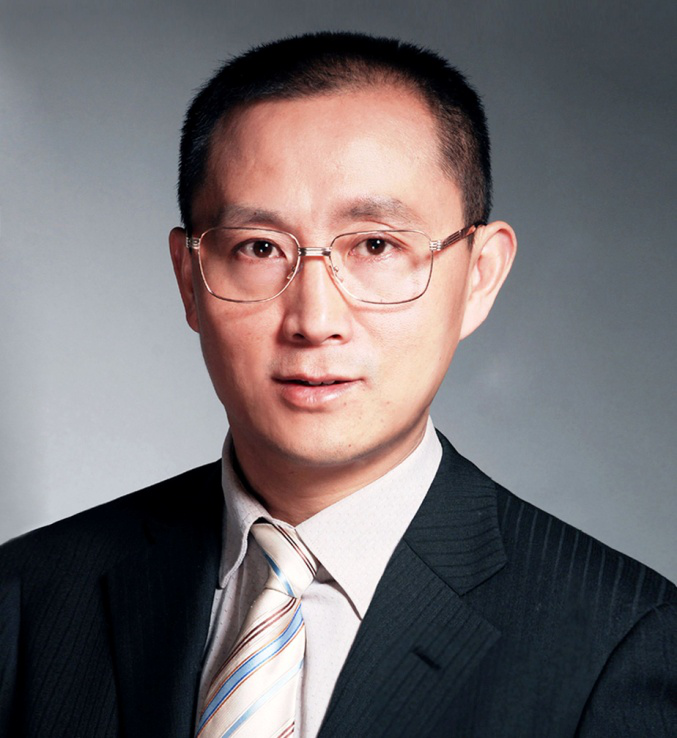On November 27th, Clarivate Analytics released its fifth annual Highly Cited Researchers list for the fifth consecutive years. Over 4,000 researchers/scientists from 21 fields of natural science and social science have made it on the list. Professor Zeshui Xu of SCU Business School and Professor Qiyong Gong of West China (Huaxi) Hosiptal have become highly cited researchers.
In recent years, SCU has made distinctive achievements regarding its strategy to strengthen university by meas of talents and speed up the construction of a team of high-level talents. With a goal of builing a team of high-end talents, SCU has made every effort to construct a career platform, work environment and living conditions conducive to the growth of talents this year. The academic subjects that are placed on the list include Computer Science, Engineering and cross-field category. Professor Zeshui Xu are selected for the two fields of computer science and engineering, and Professor Qiyong Gong is selected for cross-field category.

Zeshui Xu, Professor and Doctoral Student Advisor, is an IEEE Fellow, IFSA Fellow, the Distinguished Young Scholar of NSFC, and the Chang Jiang Scholar of the Ministry of Education of China. He has been selected as Thomson Reuters Highly Cited Researchers and included in The World's Most Influential Scientific Minds 2014-2017; Most Cited Chinese Researchers (Ranked first in Computer Science, 2014-2016). His papers have been cited over 44000 times, and his H-index is 107. He is also a State Council special allowance expert. As a Scientific Chinese (2015) People of the Year, he is Jiangsu Province “333 high-level talent training project” young and middle-aged science and technology leader, doctoral student adviser for Sichuan University, Southeast University, Army Engineering University, Nanjing Information Engineering University. Having been committed to research in fields such as decision theory and technology, information integration theory and clustering algorithm, fuzzy mathematics and optimization algorithms, etc, he now is a member of editorial board, consultant editorial board, deputy editor-in-chief or editor-in-chief for IEEE Transactions on Fuzzy Systems, Knowledge-Based Systems, Information Fusion, Fuzzy Optimization and Decision Making and other 40 domestic and international periodicals and journals. He is a reviewer for Management Scienceand other 274 domestic and foreign periodicals. He has published nine monographs in English through Springer. Of the 580 research papers, 370 are selected by SCI or SSCI, and 66 papers are included in ESI. His papers have been cited for more than 44,000 times. And his H-index is 104. Professor Xu ranks the 14th among the 3,084 scientists in the top 1% of ESI in computer science, and the 299th of the 8,250 scientists in the top 1% of ESI.

Qiyong Gong, professor and doctoral student adviser, works in the clinical radiological diagnosis. With the financial aids from the National Outstanding Youth Science Fund, CMB fund, National Natural Science Foundation of China Key Projects, the Ministry of Science and Technology 973, 863 research topics and the United States NIH R01 Fund (NSFC Joint), he has been focused on tough clinical issues in Psychoradiology. He is recognized forseminal contributions to translational imaging characterization of mental illnesses using MRI, which has been reported extensively by American Journal of Psychiatry. His research findings have been cited numerous times by Professor Raichle in his articles in Nature Reviews. Professor Raichle is a fellow of the National Academy of Sciences in the U.S.A.He has authored or co-authored over 400 peer-reviewed papers in leading journals including PNAS, JAMA Psychiatry, Radiology and Magnetic Resonance in Medicine. There have been over 10000 citations of his papers. A number of his publications have had impact and expanded the scope of MR applications in psychiatric research, and fostered a growing recognition of progress in psychiatric imaging among radiologists to forge cross-discipline interactions. Hispsychoradiological studies of the patients with both psychotic and mood disorders have been the basis for invited reviews of this field that have appeared inBiological Psychiatry and American Journalof Psychiatry. He has given invited talks at a number of international conferences, including the International Society of Magnetic Resonance in Medicine (ISMRM), the Radiological Society of North America (RSNA), and the World Congress of the International College of Neuropsychopharmacology (CINP). Ofnote, Dr Gong was invited to deliver the NIBIB New Horizons Lecture at the 23rd ISMRM Annual Meeting, where he presented on emerging Psychoradiology. These efforts contribute to progress in psychiatric imaging, including development of MRI biomarkers for diagnosis and for tracking treatment outcomes. Recognition of his contributions led to his being asked to provide an invited review of psychoradiology for the radiology community in field's flagship journal Radiology. Dr. Gong received the ISMRM Senior Fellow Award in 2016.
Professor Gong was the first mainland China scholar who got invited to write are view for Radiology and was called the pioneer in psychoradiology by Professor Pipe, then Chairman of ISMRM. In 2012, he received Editor’s Recognition Awards from Radiology, and the 13th Wu Jieping-Paul Yang Sen Medical Pharmacy Award (clinal medicine). He was engaged as a visiting professor at the School of Medicine, Yale University in 2013; and won the annual Gold Award of the First China Radiological Society’s Outstanding Contribution Award in 2016. In 2017, he was elected Secretary-General of MR Group ofInternational Society for Magnetic Resonance in Medicine,ISMRM (Future Chair).
Psychoradiology is a growing intersection between the fields of psychiatry and medical imaging. It has become one of the fields where China plays a leading role in the world. It is understood that this list is based upon the number ofClarivate Analyticstop 1% papers and citation index of WOS ( Web of Science ) in the past ten years. These papers demonstrate the research achievements in their respective fields and are widely recognized by fellow scientists worldwide. There are 17 Nobel Prize laureates including the two winners of this year on this list. In addition to the 21 fields,the list has added a new cross-field category this year. The United States is home to the highest number of HCRs ( highly cited researchers ), with 2,639 authors. The United Kingdom boasts 546. China ( mainland ) ranks No 3 with 482. Besides, China’s Hong Kong has 50; Macao has 5. And Chinese Taiwan has 20.
